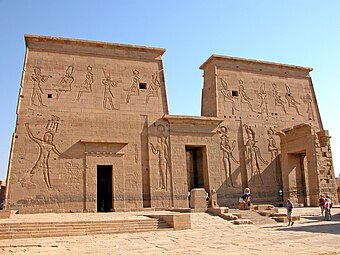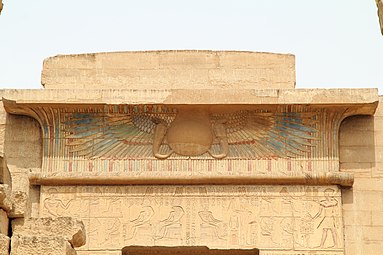
Ancient Egyptian architecture
Spanning over three thousand years, ancient Egypt was not one stable civilization but in constant change and upheaval, commonly split into periods by historians. Likewise, ancient Egyptian architecture is not one style, but a set of styles differing over time but with some commonalities.
Years active
c. 3100 BC-300 AD
$_$_$DEEZ_NUTS#0__titleDEEZ_NUTS$_$_$
$_$_$DEEZ_NUTS#0__subtitleDEEZ_NUTS$_$_$
$_$_$DEEZ_NUTS#0__call_to_action.textDEEZ_NUTS$_$_$
The best known example of ancient Egyptian architecture are the Egyptian pyramids and Sphinx, while excavated temples, palaces, tombs, and fortresses have also been studied. Most buildings were built of locally available mud brick and limestone by paid laborers and craftsmen.[1][2] Monumental buildings were built using the post and lintel method of construction. Many buildings were aligned astronomically.[3] Columns were typically adorned with capitals decorated to resemble plants important to Egyptian civilization, such as the papyrus plant.
Ancient Egyptian architectural motifs have influenced architecture elsewhere, reaching the wider world first during the Orientalizing period and again during the nineteenth-century Egyptomania.

